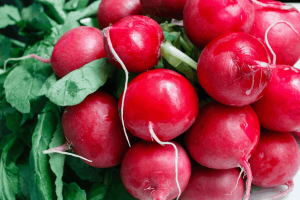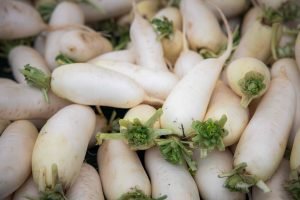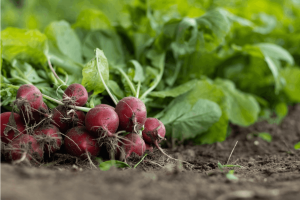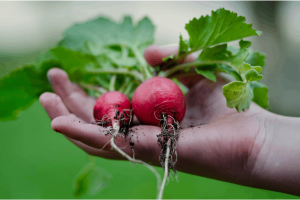How to Grow Radish from Seed to Harvest
Radish (Raphanus sativus Linn.) is a short-term crop with high income. Radish and leaves are used in used in various recipes. Radish and leaves are rich in vitamin ‘A’ and ‘C’ and are also rich in mineral salts. Radish can also be eaten as a salad. Radish has a prominent place among beetroots, which are useful not only for body nutrition but also for health protection. Especially with the property of increasing appetite, it also keeps kidney diseases under control.

Varieties:
100 grams of seeds Contains approximately 6000 seeds
Radish Seed Germination time is 5 to 10 Days
Radishes are divided into many varieties based on the shape and color of the radish. Especially the farmers are cultivating white radishes more. The radishes are heart-shaped, with fat ends at the top and cone-shaped. Farmers mostly use local varieties as seeds. In recent times many hybrid varieties have been released in radish. Farmers should choose and cultivate the right variety keeping in mind the market demand.
Japanese White: A variety suitable for winter cultivation. The pure white radishes are 20-30 cm long. Yields 8-12 tones per acre.
Vesical: It is ready for digging in 40 days after sowing. It is good to eat with less spicy and good smell. The radishes are tipped with snow white.
Pusa Himani: Radishes are white and 30-35 cm long. The Radishes are moderately spicy with a sweet smell. Pusa Chatki harvest period is 50-60 days and radishes are white and medium length. A variety resistant to white rust. Yields 8-10 tones per acre..
Hybrid Radish-11: A suitable variety for winter cultivation. Radishes are 35-40 cm long. The radish have a mild spicy and are tasty. Resistant to pests and high yield.

Soils:
Fertile sandy loam soils are most suitable for radish cultivation. Choose a firm, rock-free field to a depth of one foot with drainage facilities. Soils with soil PH level of 5.2 to 6.7 are most suitable. In shallow sandy soils, radish will not grow properly and will be flowering. In heavy black soils the radish are more spiny and are not smooth due to the formation of more lateral roots and lose shape.

Weather:
A temperature of 10-15°C is preferred for quality of radish for high yield. In high temperature the growth of radish is reduced and the plants are flowered early. If radish is cultivated in winter, the spiciness of the radish will be reduced and good quality radish will be produced. Radish can be cultivated at any time of the year except April-May in regions with high summer intensity. September to January is best for good quality beets in other areas.
Seed Per Acre:
Seed rate: 2-4 kg of seed per acre is sufficient.
Harvesting: 50-60 days.
Yield: 6-16 tones/acre.
Planting season:
Radish can be cultivated in all three seasons of the year i.e. June-July, October-November and January-February, but September to January is suitable for high yields.
Main Field Preparation and Cultivation Method:
The selected field should be well plowed and leveled 3-4 times. Make pits and canals and sow on one side of the pits. Make pits at a distance of 30 cm and sow the seed at a depth of one cm at a distance of 10 cm in each pit. Water thinly immediately after sowing.
Water management:
Water should be given every 4-6 days depending on the nature of the soil and weather. Soil should be moistened every time while fertigation. Although radishes do not require much water, the soil should not be kept too dry. This causes the radish to grow and become more spicy.
Harvesting:
Depending on the variety, the crop is harvested in 50-60 days. Water the field before harvesting and then harvest the plants. Cut the leaves and wash the radishes in water and dry them.

Yield:
Common varieties : 6-8 tones/acre
Hybrid varieties : 12-16 tones/acre
Follow WalPencil to get to know cultivation tips for other vegetable crops like Taro root, Carrot, Potato etc.
